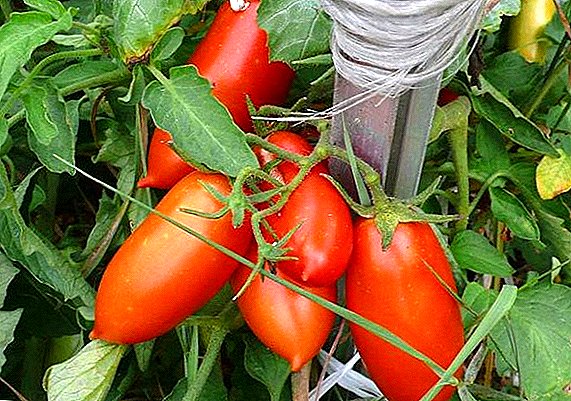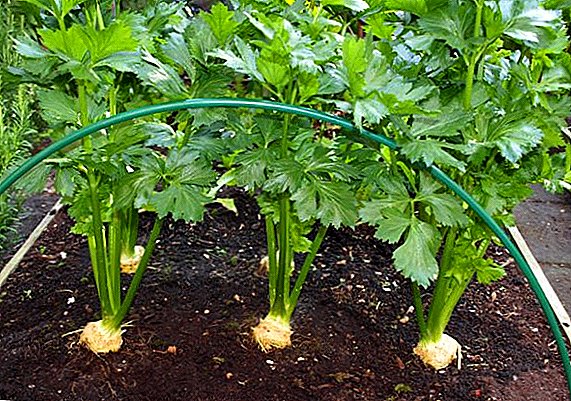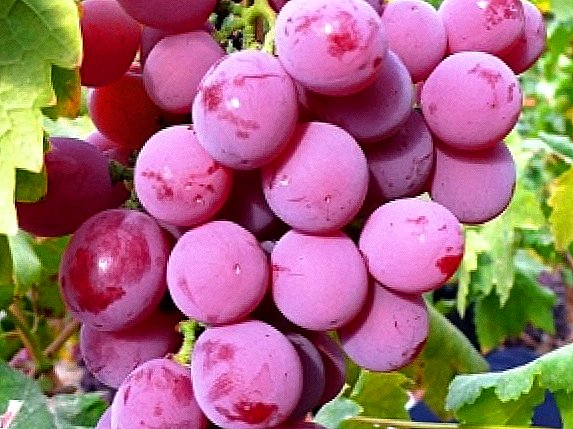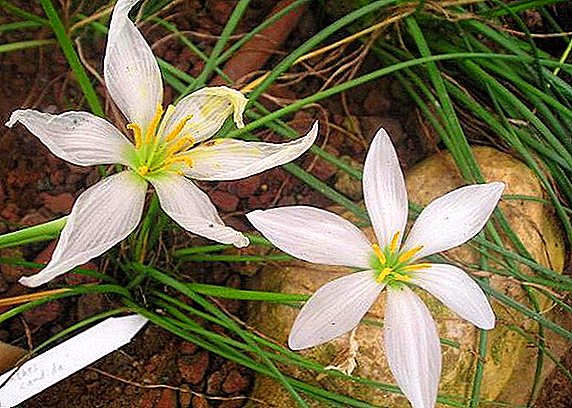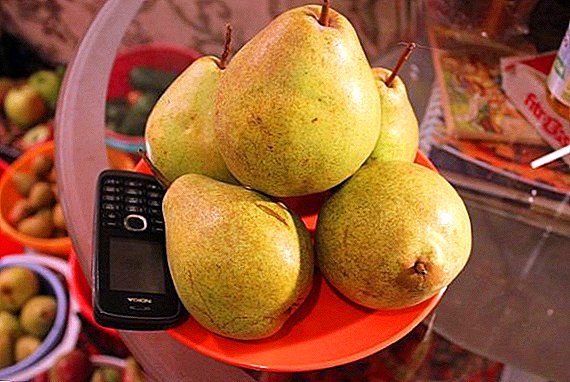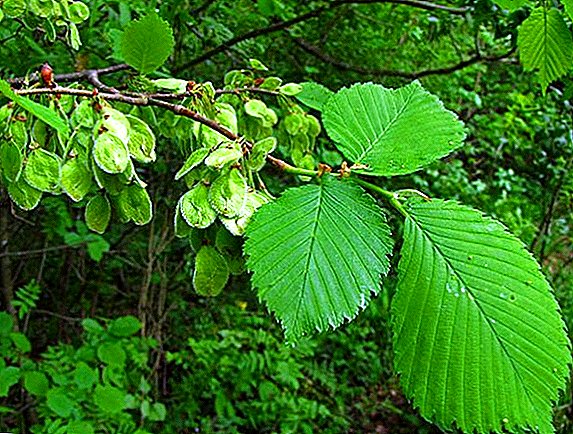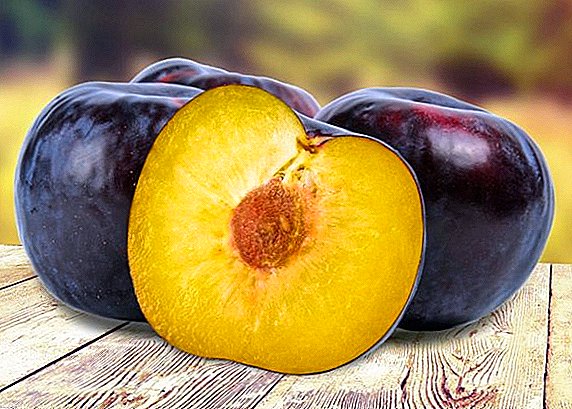 In the orchards of our latitudes such a tree as plum is very popular. Plum is a whole genus of stone fruit plants, numbering several subgenera, and in each subgenus a huge number of varieties. But to select a fruit tree, it is enough to know about the characteristics of the variety to which it belongs. Therefore, in this article we consider the characteristic features of the plum "Angelina".
In the orchards of our latitudes such a tree as plum is very popular. Plum is a whole genus of stone fruit plants, numbering several subgenera, and in each subgenus a huge number of varieties. But to select a fruit tree, it is enough to know about the characteristics of the variety to which it belongs. Therefore, in this article we consider the characteristic features of the plum "Angelina".
Botanical description
First, let's get acquainted with the appearance of the tree and fruit. This will help to visually distinguish them from other varieties.
Find out what Morning, Stanley, Eurasia, Honey White, Anna Shpet, Bogatyrskaya, Mirabel, President, Renklod look like.
Wood
In height plum "Angelina" can reach three meters. The crown of the tree is pyramid, with a wide base. Formed from powerful, slightly spreading branches. The density of foliage is average. An elliptical leaf with a slight taper at the apex. White flowers are collected in simple umbrellas. The flowering period falls on the beginning of May. Flowering begins one year after planting. 
Learn about Ussuri, Chinese, peach, columnar, samoplodny plums.
Fruits
The shape of the fruits are round or barrel-shaped, rather large. Some can reach 120 grams. On average, the fruit of "Angelina" can weigh 60-90 grams. The flesh is amber, juicy, has a sweet-sour taste. From above it is covered with dense skin of dark-violet color which is characterized by a blue raid with a slight silvery shade. The flesh envelops a small bone, from which it is easily separated.
Video: Angelina Hybrid Tasting
Did you know? The Queen of England begins breakfast with a plum variety "Brompkon" growing in her garden.
Characteristic variety
Now describe in detail the grade.
Winter hardiness and disease resistance
"Angelina" is characterized by increased frost resistance: it easily survives temperatures up to -30 ° C. But disease resistance is on average: the tree is often attacked by various pests. We will give examples and describe how to deal with them:
- Holey spot. This fungal disease can affect branches, buds, foliage, inflorescences. It appears brown spots with dark edging. On the leaves, in addition to spots, there are holes. The affected fetus changes its shape and stops growing. The disease is activated during the spring rains. To overcome the disease, you need to regularly thin out the crown of the plum, collect fallen leaves and dig the soil under the tree. All affected branches are cut off, and wounds are treated. If the disease began to develop strongly after two or three weeks after flowering, the plant should be sprayed with one-percent Bordeaux mixture or copper chlorine at the rate of 30-40 grams per 10 liters of water.
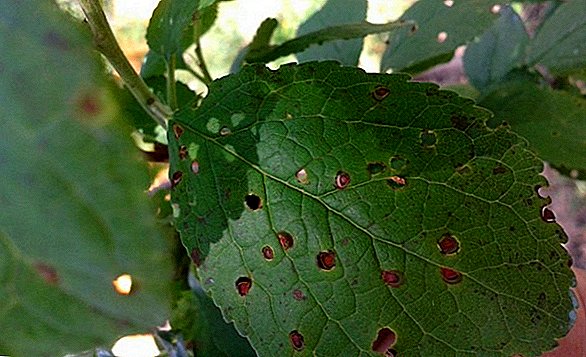
- Comedication This is the most common disease for stone fruit plants. It manifests itself as a thick, colorless resin with a brown or yellow tinge. The substance appears at the point of cutting the branch or where the plant has been sunburned. Sick branch dries up. The cause of the manifestation of the disease may be an excess of nitrogen and moisture in the earth. To prevent the occurrence of the disease, you should carefully care for the tree, try not to injure it. The appeared wound needs to be cleaned and treated with a one-percent solution of copper sulphate and apply petrolatum. Strongly cut branches cut off. Clean off the dead bark, treat the place with horse sorrel and garden pitch.

- Rust. Another type of fungal disease. It is activated, as a rule, in July. The affected leaves on the outside become covered with bulky round-shaped spots, similar to rusty. They are characterized by an increase in size. The diseased tree quickly weakens, loses its foliage early and becomes less resistant to frost. The fight is to use copper chloride for spraying. The solution is prepared at the rate of 40 grams per 5 liters of water. On one tree should go 3 liters. This procedure is carried out before flowering. After harvesting the plant is treated with one percent Bordeaux liquid. With the arrival of autumn, the fallen leaves must be constantly cleaned and burned.

- Fruit rot. Manifested in a rainy summer. The first manifestations of the disease are noticeable in mid-July. First, mechanically damaged fruits (beaten by hail, eaten by birds) suffer. A brown spot appears on the fruit. With increased humidity and high temperature, it increases in size. Next, the surface of the fruit is covered with gray-brown "pads", within which there are spores. They are easily broken by the wind and transferred to other trees.

Learn in detail about plum diseases, how to deal with plum pests, in particular, with a shield and aphids.If the affected fruits are found, they should be immediately picked and buried or composted. It is necessary to take away sick fruits very carefully, in order not to touch healthy ones, otherwise rot will move on them. To prevent the manifestation of the disease, treat the tree with one percent Bordeaux liquid and conduct intensive control of pests eating the fruit.
These are not all diseases that can attack a plant, but only the most common ones.
Pollinators
The plum "Angelina" only flowers for women, so that in the tree formed ovary, nearby should be plants with male or bisexual flowers. In addition, their flowering period should coincide with the flowering of "Angelina". As pollinators for this tree will fit: cherry plum, plum "Black", "Amber", "Friar".
Ripening period and yield
"Angelina" brings harvest in the third year of life. Fruits are formed regularly. The variety has a good yield: 50-70 kg per tree. Collection is made from the third decade of September. 
Learn how to make prunes, plum tincture, jam, compote, pickled plums, plum wine.
Transportability and storage
This grade has high keeping quality. Plums can lie for three weeks at room temperature. In the refrigerator, the shelf life is increased to three to four months. Neither the taste nor the shape does not change.
You can collect fruits that have not risen, then they will ripen in the refrigerator and will taste better. Transportability is also high.
Application
This variety is suitable for:
- fresh use;
- frosts (nutrients and taste are not lost);
- cooking jams, preserves, compotes, liqueurs;
- cooking delicious prunes.
Did you know? The described plum variety appeared by crossing cherry plum with Chinese plum.

Growing conditions
Plum is very fond of the sun, so when choosing a place to plant, it should be noted that there should not be tall plants nearby that will shade the young, otherwise the seedling will grow slowly. It is also necessary to take into account that the crown of an adult tree is lush and it needs a lot of free space.
Sour soil is not suitable. In the presence of such a soil, it is necessary to deacidate it, introducing dolomite flour or ash. Also, the soil should not be regularly overwetted. To do this, select a place where groundwater does not come closer to the surface than half a meter. Does not like this plum and strong winds, which is important to consider when choosing a site for planting.
Learn how to grow a plum from a stone, propagate the plum by cuttings, form a plum crown, how to plant fruit trees.
Landing rules
Planting of seedlings can be carried out in the spring, before bud break (April), and in the fall, before the frosts start (September). If you purchased a sapling in the autumn, then you can prikopat and cover it with fir branches. When the snow falls, sprinkle it abundantly with spruce branches. In the spring, look if there is any damage to the seedling, and after preparing a permanent growing place, repot it.  Before planting on the selected site, add ash (0.8 kg per square meter) and dig. Now we dig a hole 60x70 centimeters in size. In the center set the peg-support. Between the pits should be about three meters and the same between the rows. Mixed from the pit ground mixed with one or two buckets of humus or compost. Add up to 400 grams of superphosphate.
Before planting on the selected site, add ash (0.8 kg per square meter) and dig. Now we dig a hole 60x70 centimeters in size. In the center set the peg-support. Between the pits should be about three meters and the same between the rows. Mixed from the pit ground mixed with one or two buckets of humus or compost. Add up to 400 grams of superphosphate.
Selected seedlings are placed on the north side of the peg. Keep it level and cover it first with clean earth, and then with fertilizer, periodically tamping down the soil a little. Then the seedling is tied to a stick and poured with four buckets of water, mulched with humus, peat or dry soil.
Seasonal care features
As we have said, in order for diseases to attack the plant less, they need proper care. We describe several subtleties.
Watering
Watering is necessary regularly - so that the moisture soaked the soil layer of about 40 centimeters. In the first half of summer, the plant needs abundant watering, about five buckets of water.
Important! Do not allow an excess of moisture, otherwise fungal diseases will develop, and the fruits will crack.

Top dressing
Until the age of five, plums are fed according to this scheme (per square meter):
- in the spring - ammonium nitrate (2 tbsp. l.);
- in the fall - potassium salt (2 tablespoons), superphosphate (4 tablespoons).
For older trees, the scheme is the same, and the number doubles. It is necessary to make organic fertilizers once every three years: one bucket of humus will suffice.
Soil care
Weeds are removed in the summer. At the same time, the soil is slightly loosened. Only young saplings need mulching. A mulch layer about five centimeters thick is lined with manure. The main thing with this - do not stain the trunk.
It is also necessary to remove root shoots. 
Pruning
Young trees need constant pruning in the summer to accelerate fruiting. Already mature trees are amenable to formative pruning - this is an easy type of this procedure. In the course of it, thinning of the crown takes place so that there is no thickening, and the main branches are cut off in order to stimulate the growth of the growing ones. During the fruiting period, diseased and dried branches should be removed. Sanitary pruning is carried out in the fall.
Anti-aging pruning is done when a slowdown in tree growth and a decrease in yield are noticed. The procedure removes branches that have grown over the last three to four years. The next time they prune after 4-5 years.
Preparing for the winter
Preparing for winter begins with tamping up the soil around the tree. If necessary, watering and feeding the plant. Also, the barrel is painted with lime in order to avoid damage from severe frosts, spring frosts and extreme temperatures. The tree is mulched with humus, and when snow falls, a snowdrift is formed around the trunk.
Important! Young animals should be tied with sacking or agrofibre: they will protect against frost and rodents.

Advantages and disadvantages
Positive traits:
- tasty large fruit;
- long shelf life;
- high frost resistance;
- increased yield;
- fruits can be used for any purpose.
- disease resistance is average;
- difficult to pick up a pollinator;
- grows poorly in the Central Black Earth region.
As you can see, "Angelina" has several advantages over other varieties. First of all, it is a good yield and frost resistance. At the same time, there are some problems with her breeding. But if you follow all the rules, the tree will delight you with tasty fruits.
Its fruits are closer in quality to the plum fruits, and the tree has all the morphological signs of cherry plum: a strong-growing variety with a powerful broad-pyramidal crown.
To date, Angelino is the longest-lasting frozen variety. In the refrigerator (at tº 0 + 2º С) fruits are stored for 2-3 months.
Interestingly, during storage, Angelina's palatability improves:
4.2 points - ripened on the tree, 4.5 points - ripened in the refrigerator.
The flesh is greenish-yellow, juicy, sweet-sour, the bone is very small. Loose maturity occurs in the second half of September.
He needs a pollinator.










